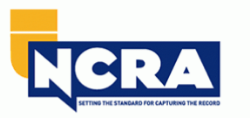Trial Presentation Trusted Experts in Courtroom Tools and Graphics
Trial Presentation Trusted Experts in Courtroom Tools and Graphics
Blog Article
Mesmerize the Court: Essential Components of a Powerful Test Discussion
Necessary elements such as comprehending the audience, crafting an engaging narrative, and mastering spoken and non-verbal interaction are important parts of an effective presentation. As these aspects intertwine, they create a cohesive method that not only informs but also engages jurors on multiple levels.

Recognizing Your Audience
Understanding your target market is an essential facet of efficient test discussion. An effective presentation depends upon the ability to understand the demographics, worths, and tendencies of jurors. This comprehension informs just how disagreements are mounted, evidence exists, and psychological charms are crafted, ensuring that the message resonates with the jurors on a personal level.
Research study suggests that jurors come from varied backgrounds and might have differing degrees of understanding pertaining to lawful proceedings. Furthermore, recognizing the jurors' prospective predispositions and life experiences allows the test presenter to anticipate objections and address problems proactively.
Effective test presentation also includes observing jurors' reactions throughout the proceedings. Engaging with jurors as people rather than a cumulative device is important in cultivating a strong connection in the court.

Crafting an Engaging Story
Crafting an engaging story is vital in assisting jurors via the complexities of an instance. A well-structured story not just streamlines complex lawful principles but likewise engages jurors on a psychological level, making the information much more relatable and memorable.
To attain this, lawyers must begin by determining the core message they want to convey. This message ought to reverberate with the jurors' worths and experiences, cultivating a connection that transcends plain realities. The story should unravel rationally, providing occasions in a clear series to stay clear of complication. This sequential method can aid jurors follow the development of occasions, stressing cause and impact.
Integrating human components-- such as individual tales or narratives-- can further boost the narrative's influence. These components stimulate compassion, enabling jurors to picture the effects of the situation on the real worlds. Furthermore, utilizing a regular style throughout the discussion strengthens the primary debate, making it less complicated for jurors to retain crucial points.
Inevitably, a compelling narrative changes a test presentation from a plain address of facts into a persuasive tale that mesmerizes the jury, encouraging them to deliberate with both factor and feeling.
Utilizing Aesthetic Help
Incorporating aesthetic help right into a trial presentation can dramatically enhance jurors' comprehension and retention of details. Aesthetic products such as graphes, layouts, photos, and video clips can transform intricate lawful principles and evidence into quickly digestible layouts. By engaging several senses, these help enable jurors to picture the situation's crucial elements, making it simpler for them to adhere to along and understand detailed details.
Additionally, well-designed aesthetic aids can highlight crucial points and emphasize partnerships between different items of proof. As an example, timelines can successfully illustrate the series of occasions, while annotated photos can make clear particular information appropriate to the case. This not just aids in understanding but likewise enhances the story offered by the attorney.
Extremely complex or cluttered visuals might bewilder jurors and detract from the message. Ultimately, reliable aesthetic communication can be a powerful device in convincing jurors and assisting them get to notified final thoughts.
Mastering Verbal Communication
Effective verbal communication is critical in a trial discussion, as it acts as the key means whereby attorneys convey their debates and get in touch with jurors. Understanding this skill involves clearness, persuasion, and involvement. Lawyers must verbalize their points plainly and concisely, preventing legal lingo that may confuse jurors. Simplicity in language fosters understanding and helps jurors comprehend complex problems offered during the trial.
Moreover, like this tone and pacing dramatically effect just how messages are obtained. A confident tone shares authority, while proper pacing permits jurors to take in info without feeling bewildered. Attorneys ought to likewise vary their vocal inflections to highlight essential points and keep jurors' rate of interest throughout the discussion.
Additionally, the company of verbal arguments is important. Structuring the narrative realistically and coherently assists jurors adhere to the attorney's line see here of thinking, making it less complicated for them to retain essential info. Utilizing persuasive methods, such as narration, can also boost the psychological vibration of the debates provided, consequently developing a more profound connection with jurors.
Ultimately, understanding verbal communication not just enhances an attorney's situation however likewise cultivates trust and relationship with the jury, significantly boosting the chances of a beneficial judgment.

Involving With Body Movement
Nonverbal communication plays a vital duty in trial presentations, often communicating messages that words alone can not reveal. Body language, including gestures, stance, facial expressions, and eye contact, considerably affects exactly how jurors regard the integrity and sincerity of the presenter. A confident position, with shoulders back and an open pose, can infuse trust fund, while closed-off body movement may suggest defensiveness or unpredictability.

Faces should reflect the emotions associated with the case, enhancing the story being presented. A genuine expression during an emotional moment can evoke empathy and strengthen the psychological charm. Eventually, mastering body language is crucial for reliable test presentations, as it enhances verbal communication and establishes a compelling existence that resonates with the court.
Conclusion
Finally, mesmerizing the court necessitates a tactical technique that includes recognizing the target market, crafting an engaging narrative, utilizing visual help, grasping spoken communication, and involving with body movement. Each element plays a vital duty in developing a powerful trial presentation that reverberates with jurors on both psychological and intellectual levels (trial presentation). By integrating these elements successfully, attorneys can significantly improve their capability to convince and influence jury decision-making
Report this page